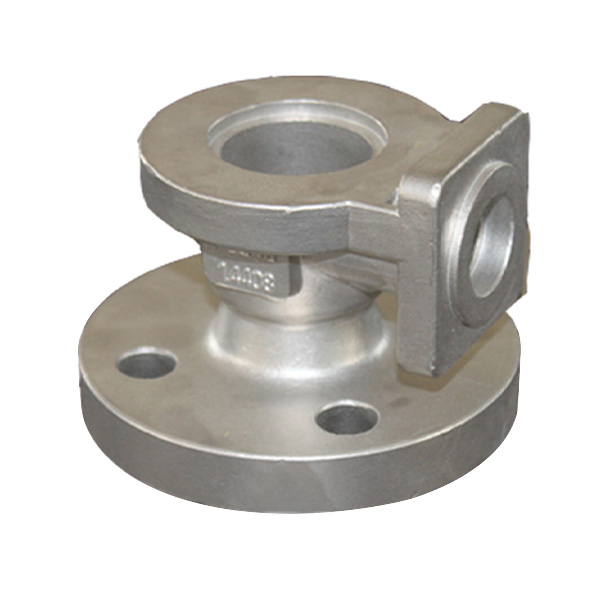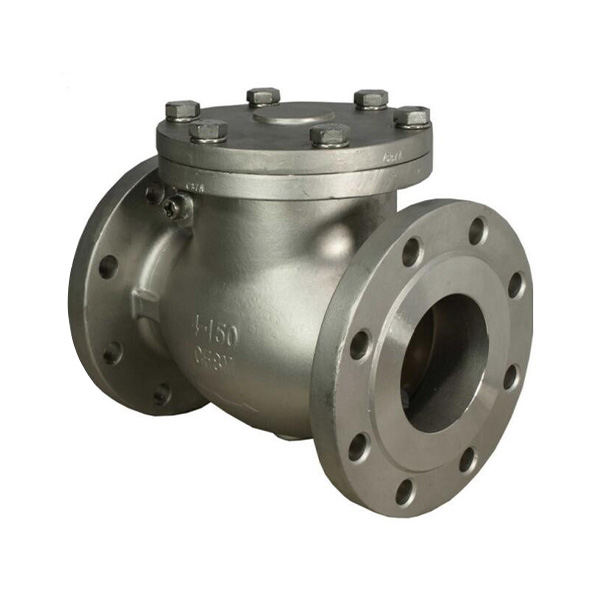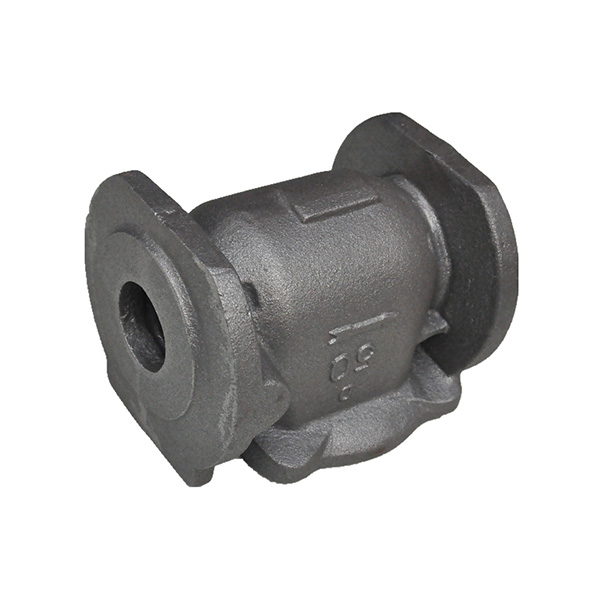Mobile:+86-311-808-126-83
Email:info@ydcastings.com
Spanish
High-Quality Valve Body Castings & Cast Iron Valve Covers
Understanding the Core: The Valve Body in Industrial Applications
The valve body stands as the fundamental structural component of any valve, meticulously engineered to house the internal mechanisms, facilitate fluid control, and endure diverse operational conditions. As a critical element in fluid power systems, its design and material selection are paramount to ensuring the integrity, efficiency, and longevity of the entire system. From controlling the flow of highly corrosive chemicals in the petrochemical industry to managing vast volumes of water in municipal infrastructure, the performance of a valve directly impacts process safety, environmental compliance, and operational costs. Modern industrial demands necessitate these essential components that not only conform to stringent technical specifications but also offer superior resistance to wear, corrosion, and extreme temperatures. The evolution of manufacturing technologies, particularly in areas like valve casting and advanced machining, has significantly enhanced the capabilities and reliability of these components. This foundational piece explores the intricate details of valve manufacturing, its diverse applications, and the technological advancements that define its current and future landscape, underscoring its indispensable role in industrial process control. The selection of the right material and manufacturing process for this component is a strategic decision that influences the overall system's integrity, ensuring long-term performance and minimizing maintenance requirements across a vast spectrum of critical applications, from pulp and paper to power generation. This section sets the stage for a deep dive into the engineering, production, and deployment of these vital industrial components, highlighting their economic and operational significance.
Precision Engineering: The Manufacturing Process of High-Performance Valve Bodies
The production of a high-quality valve body is a complex, multi-stage process that combines traditional metallurgical techniques with advanced machining and rigorous quality control. It typically begins with material selection, where engineers choose alloys like ductile iron, gray iron, carbon steel, stainless steel, or specialized nickel alloys, based on the application's specific pressure, temperature, and corrosion resistance requirements. For instance, in applications requiring high strength and durability at a competitive cost, water valve cover cast iron is frequently utilized due to its excellent mechanical properties and cost-effectiveness. The primary shaping process is often valve casting, particularly investment casting or sand casting, for intricate geometries and large volumes. Investment casting offers superior surface finish and dimensional accuracy, reducing subsequent machining, while sand casting is a more cost-effective method for larger, less complex valve castings. Following the initial casting phase, these rough castings undergo precise heat treatment processes. This critical step is designed to relieve internal stresses introduced during solidification, enhance grain structure, and optimize the material's mechanical properties, ensuring the component achieves its desired hardness, tensile strength, and ductility for long-term operational integrity.

Subsequent to initial shaping and heat treatment, precision CNC (Computer Numerical Control) machining transforms the raw valve body into its final, highly accurate form. This stage involves sophisticated milling, drilling, boring, and turning operations to create precise internal passageways, seat pockets, flange faces, and connection points, adhering to tolerances often measured in microns. For example, the precise geometry of a butterfly valve component is crucial for effective sealing and minimal pressure drop, which directly impacts energy efficiency. Throughout this manufacturing lifecycle, stringent inspection standards, such as ISO 9001 for quality management systems and ANSI/ASME standards for dimensions and material specifications (e.g., ASME B16.34), are strictly adhered to. Non-destructive testing (NDT) methods like ultrasonic testing, magnetic particle inspection, and radiographic testing are routinely employed to detect any internal flaws, cracks, or material discontinuities, ensuring the structural integrity of each component. Additionally, hydrostatic testing verifies the pressure containment capabilities, while pneumatic testing checks for leakage, guaranteeing that the finished product meets or exceeds industry benchmarks. The lifecycle of a well-manufactured valve, when properly specified and maintained, can extend for decades, minimizing total cost of ownership and maximizing operational uptime in demanding industrial environments, providing significant return on investment. This rigorous process ensures that every component delivered is fit for purpose, delivering unparalleled performance and reliability.
Technical Parameters & Performance Benchmarks for Valve Bodies
Selecting the appropriate valve body requires a thorough understanding of its technical parameters, which dictate its performance, suitability, and long-term reliability in specific applications. Key parameters include nominal pressure (PN/Class), nominal diameter (DN/NPS), material composition, temperature range, and connection type. For instance, a component designed for high-pressure oil and gas applications might be rated ANSI Class 2500, indicating its ability to withstand extreme pressures, while a municipal water system might use a PN16 rated water valve cover cast iron, suitable for lower pressure, high-volume flows. Material choice is paramount: 316L stainless steel offers superior corrosion resistance for chemical processing and marine environments, whereas A216 WCB carbon steel is a cost-effective choice for general industrial applications with moderate temperatures and pressures. Beyond these, flow coefficient (Cv), which quantifies the efficiency of fluid flow through the valve, and leakage class (e.g., ANSI/FCI 70-2 Class IV, V, or VI), indicating the permissible leakage rate, are crucial for ensuring seamless integration and optimal control. Understanding these technical nuances is essential for system designers and procurement specialists to ensure the chosen valve solution performs optimally within the operational envelope.

Below is a comprehensive table summarizing typical technical specifications for various valve body types, providing a quick reference for engineers and procurement specialists. These parameters are often verified through rigorous testing, including hydrostatic pressure tests to confirm structural integrity, low-pressure air seat tests to evaluate sealing capability, and detailed material chemical analysis to ensure compositional compliance. All these tests ensure that each valve body meets international standards such as ASME B16.34 (Valves—Flanged, Threaded, and Welding End) and API 6D (Pipeline Valves). The performance metrics illustrated reflect industry best practices and common requirements for durable and efficient fluid control components. Understanding these specifications is paramount for ensuring operational safety, process efficiency, and regulatory compliance, particularly in sensitive industries like pharmaceuticals or food processing where precise control and material purity are non-negotiable. It also aids in predicting the lifespan and maintenance needs of the component, contributing to a lower total cost of ownership over the operational life of the system and enhancing overall return on investment.
Typical Valve Body Technical Specifications
| Parameter | Typical Range/Value | Relevant Standard/Note |
|---|---|---|
| Nominal Diameter (DN/NPS) | DN15 - DN1200 (1/2" - 48") | API 600, ASME B16.10 |
| Nominal Pressure (PN/Class) | PN10 - PN420 (Class 150 - Class 2500) | ASME B16.34, EN 1092-1 |
| Body Material | Cast Iron (HT200, HT250), Carbon Steel (WCB, LCB), Stainless Steel (CF8, CF8M, CF3M), Duplex/Super Duplex SS, Alloy Steel | ASTM A216, A351, A105, A536, A515, EN GJL-200, EN GJS-400 |
| Applicable Temperature | -196°C to +800°C (depending on material) | API 600, ISO 1043-1 |
| End Connection Type | Flanged (RF, FF, RTJ), Welded (BW, SW), Threaded (NPT, BSP) | ASME B16.5, B16.11, B16.25 |
| Leakage Class | Class IV, V, VI (Metal & Soft Seated) | ANSI/FCI 70-2 |
| Design Life Expectancy | 20-30+ years (with proper maintenance) | Industry Average for Quality Components |
Versatile Applications & Distinct Advantages of Robust Valve Bodies
The robust and meticulously engineered valve body finds its indispensable place across a myriad of industrial sectors, each benefiting from its specific design and material properties. In the petrochemical and oil & gas industries, these components are crucial for handling volatile hydrocarbons at high pressures and temperatures, preventing leaks and ensuring safe operations. Their superior corrosion-resistant properties are paramount in these demanding environments, where failure can lead to catastrophic consequences. The metallurgy industry relies on heavy-duty components for controlling abrasive slurries and molten metals, where durability and extreme heat resistance are non-negotiable. Meanwhile, in the critical infrastructure of municipal water supply and drainage systems, water valve cover cast iron components are extensively used for their inherent strength, cost-effectiveness, and exceptionally long service life in managing potable water and wastewater flows, contributing to the efficient functioning of urban utilities. Their ability to withstand continuous operation in harsh, moist environments makes them ideal for such large-scale applications.

Beyond these, these critical valve components are integral to power generation (thermal, nuclear), pulp and paper, food and beverage, pharmaceutical, and HVAC systems. In power plants, for instance, high-pressure valve components manage steam and cooling water, directly impacting energy efficiency and operational safety by ensuring precise control of critical fluids. A key advantage of modern designs, especially those manufactured with advanced valve casting techniques, is their exceptional resistance to corrosion and erosion, significantly extending service life and reducing maintenance downtime. Many designs also incorporate features that contribute to energy efficiency by optimizing flow paths, minimizing pressure drop, and ensuring tight shut-off, which can lead to substantial energy savings over the operational lifespan. The ability to customize these components to specific requirements, including exotic materials for unique chemical compatibility or specialized end connections, further enhances their utility and cost-effectiveness for highly specialized industrial applications. We have successfully supplied custom solutions for major projects, including a large-scale desulfurization plant in Saudi Arabia requiring corrosion-resistant duplex stainless steel bodies, and a municipal water treatment facility in Germany that utilized custom valve body castings designed for ultra-low pressure drop, contributing to a documented 5% energy saving in their pumping stations due to reduced energy consumption for fluid conveyance.
Ensuring Excellence: Quality, Trust, and Support for Your Valve Needs
In the demanding B2B landscape, the reliability and trustworthiness of a supplier are as critical as the technical prowess of the valve body itself. Our commitment to excellence is deeply rooted in adherence to global quality standards and continuous investment in advanced manufacturing processes. We are ISO 9001 certified, ensuring that every stage of our production, from raw material inspection to final product testing, meets stringent international benchmarks for quality management. Our products, including all valve body castings, comply with critical industry certifications such as CE, API, and often FDA for specific applications, validating their performance, safety, and suitability for regulated environments. With over two decades of experience in the valve casting and precision machining industry, we have cultivated an unparalleled expertise in delivering custom solutions tailored to unique client specifications, ensuring optimal performance even in the most challenging operational environments. Our long-standing partnerships with leading engineering firms and industrial corporations globally attest to our consistent quality and reliable service.

Our dedication to customer satisfaction extends beyond product delivery. We offer comprehensive support, including in-depth technical consultations during the design phase, transparent communication regarding production milestones, and robust after-sales service. Our typical delivery cycle for standard valve component orders ranges from 4-6 weeks, with expedited options available for urgent requirements, ensuring project timelines are met efficiently. Custom valve body castings may require a slightly longer lead time, typically 8-12 weeks, depending on design complexity and the sourcing of specialized materials. Each component comes with a standard 12-month warranty against manufacturing defects, underscoring our unwavering confidence in product quality and reliability. Our client testimonials frequently highlight our responsive support and the consistent, high performance of our components. A recent case study involved a large-scale power plant upgrade, where our custom-designed valve bodies, engineered to handle extreme pressure and temperature variations, were delivered two weeks ahead of schedule, facilitating a smooth project rollout and preventing costly delays for our client. We also provide extensive documentation, including material test reports, dimensional inspection reports, and pressure test certificates, ensuring full traceability and compliance with all project specifications.

Frequently Asked Questions (FAQs)
- Q: What materials are available for valve bodies?
A: We offer a wide range including various grades of cast iron (e.g., HT200, HT250), carbon steel (WCB, LCB), stainless steel (CF8, CF8M, CF3M), alloy steel, and specialized alloys like Duplex/Super Duplex Stainless Steel, tailored to your application's requirements for chemical compatibility and temperature resistance. - Q: How do you ensure the quality of valve body castings?
A: Our rigorous quality assurance process includes adherence to ISO 9001, comprehensive material chemical analysis, advanced non-destructive testing (NDT) such as ultrasonic and magnetic particle inspection, precise dimensional checks, and rigorous hydrostatic/pneumatic pressure testing on every unit. - Q: Can you provide custom valve body solutions?
A: Absolutely. We specialize in custom solutions, working closely with clients from design conceptualization to final production. This includes accommodating specific material grades, precise dimensions, unique pressure ratings, and specialized end connection requirements to perfectly fit your system. - Q: What is the typical lead time for valve body orders?
A: Standard orders for these components typically ship within 4-6 weeks. Custom or complex valve body castings usually require 8-12 weeks, depending on design complexity, material availability, and specific testing requirements. - Q: What kind of after-sales support do you offer?
A: We provide extensive technical support, comprehensive troubleshooting assistance, and a standard 12-month warranty on all our valve components against manufacturing defects, ensuring long-term peace of mind and operational efficiency.
Authoritative References
- American Society of Mechanical Engineers (ASME). ASME B16.34: Valves—Flanged, Threaded, and Welding End.
- American Petroleum Institute (API). API 6D: Specification for Pipeline Valves.
- International Organization for Standardization (ISO). ISO 9001: Quality Management Systems—Requirements.
- Fluid Controls Institute (FCI). ANSI/FCI 70-2: Control Valve Seat Leakage.
- ASTM International. ASTM A216/A216M: Standard Specification for Steel Castings, Carbon, Suitable for Fusion Welding, for High-Temperature Service.
-
Superior Aluminum Castings in Automotive Engine PartsNewsAug.22,2025
-
Common Materials Used in Fan Housing ManufacturingNewsAug.22,2025
-
Symptoms of a Stuck Automobile Water Pump ImpellerNewsAug.22,2025
-
The Importance of Valve Castings in Water TreatmentNewsAug.22,2025
-
Welding Techniques for End Cap Stainless Steel FittingsNewsAug.22,2025
-
How to Install a Water Pump Connector ProperlyNewsAug.22,2025











